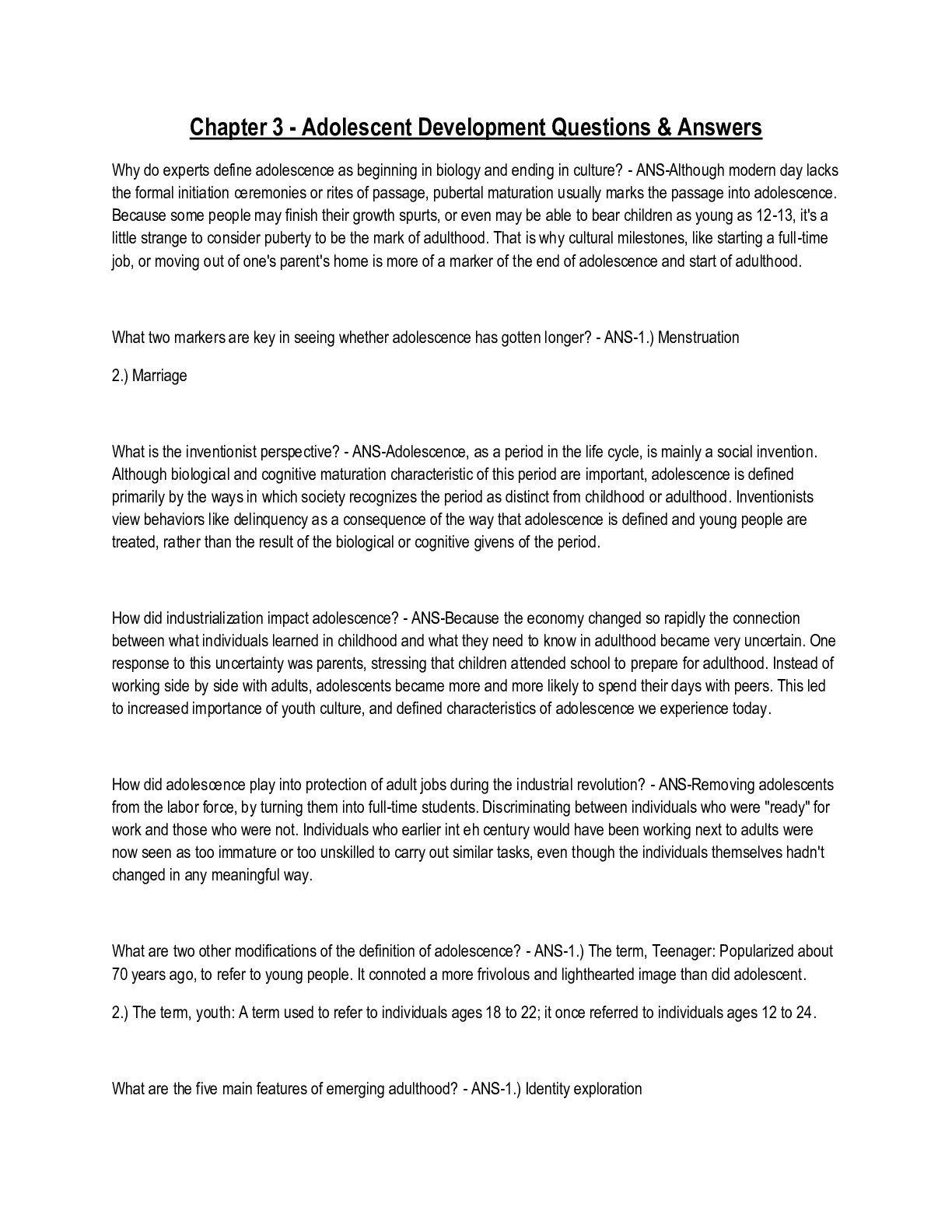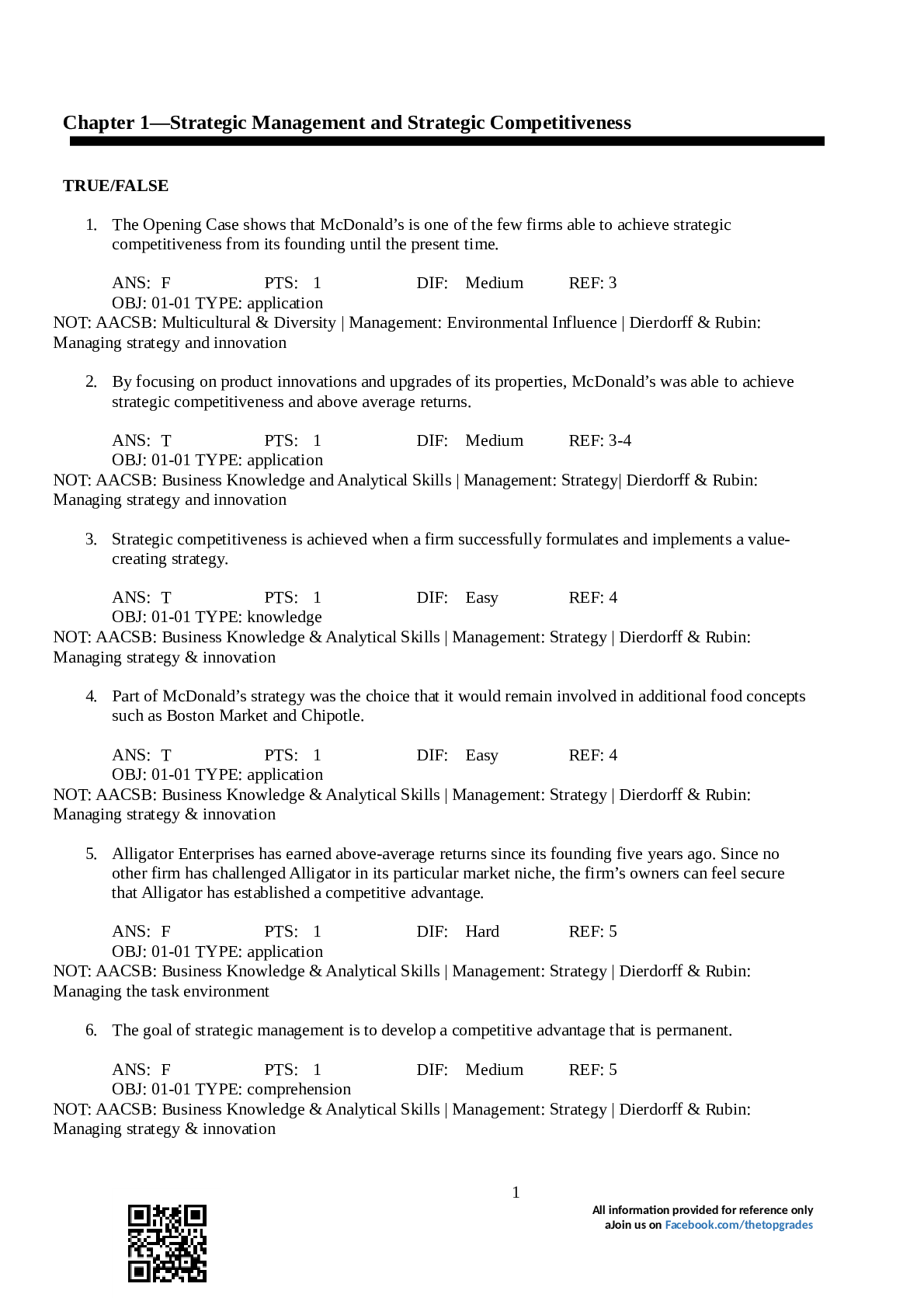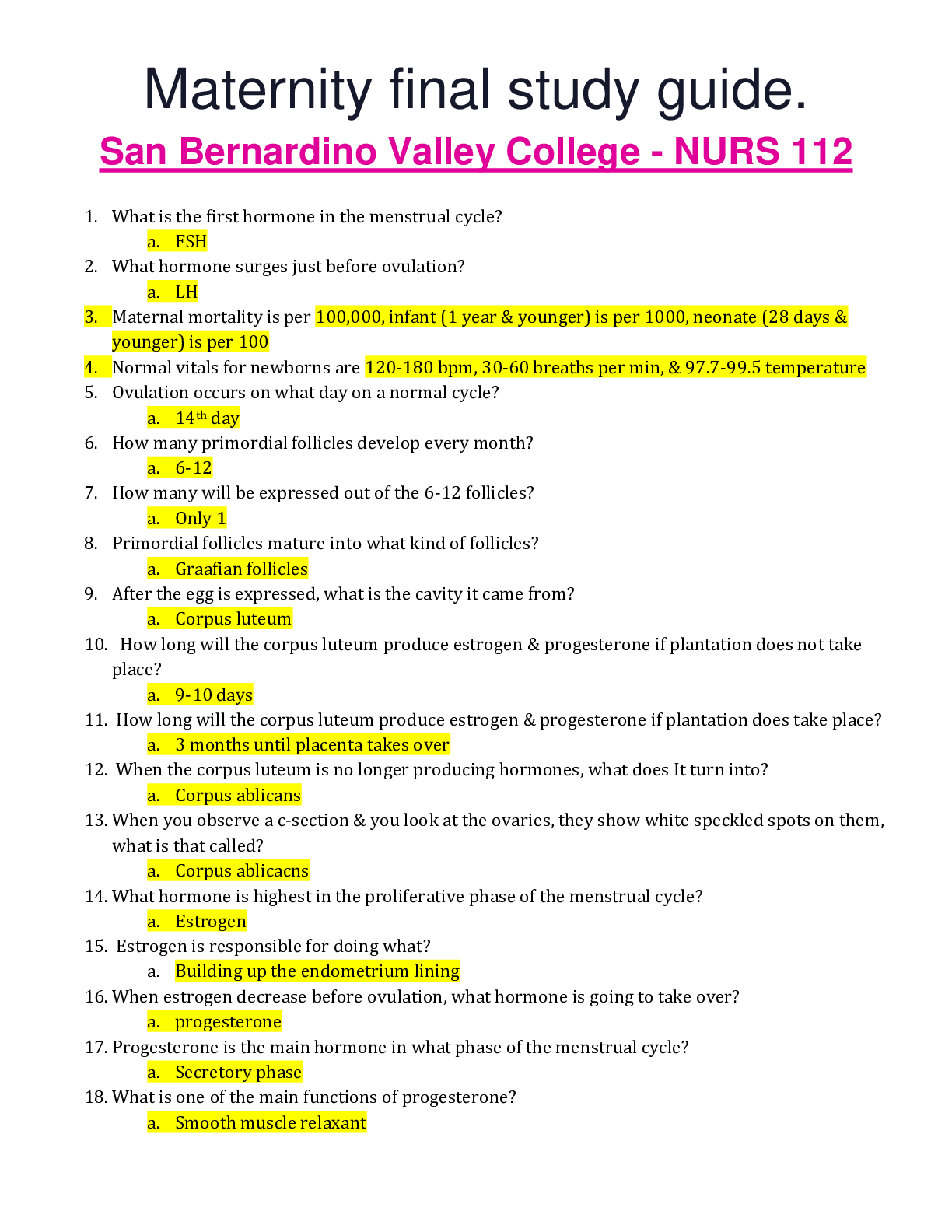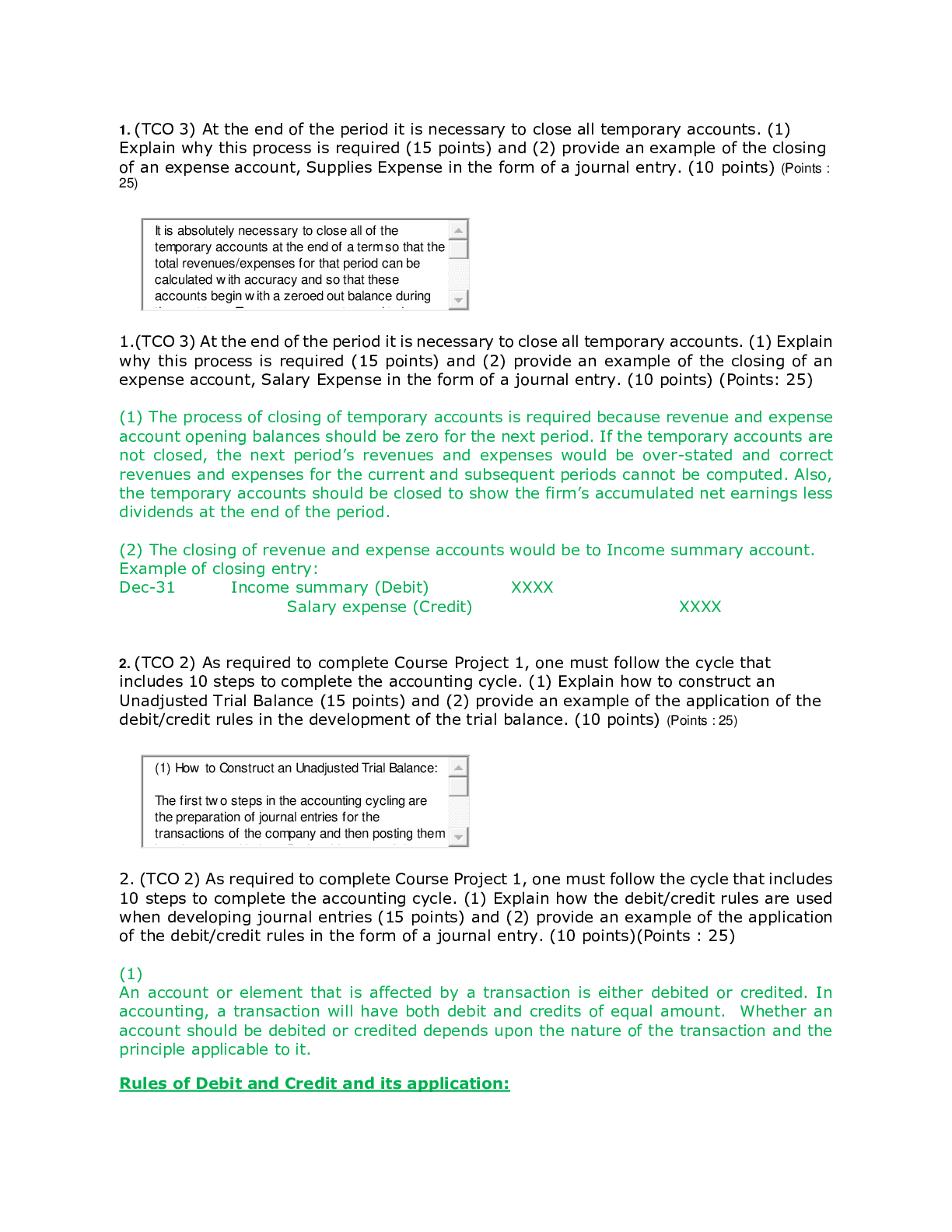Chapter 3 - Adolescent Development Questions & Answers
Document Content and Description Below
Chapter 3 - Adolescent Development Questions & Answers Why do experts define adolescence as beginning in biology and ending in culture? - ANS-Although modern day lacks the formal initiation ceremon... ies or rites of passage, pubertal maturation usually marks the passage into adolescence. Because some people may finish their growth spurts, or even may be able to bear children as young as 12-13, it's a little strange to consider puberty to be the mark of adulthood. That is why cultural milestones, like starting a full-time job, or moving out of one's parent's home is more of a marker of the end of adolescence and start of adulthood. What two markers are key in seeing whether adolescence has gotten longer? - ANS-1.) Menstruation 2.) Marriage What is the inventionist perspective? - ANS-Adolescence, as a period in the life cycle, is mainly a social invention. Although biological and cognitive maturation characteristic of this period are important, adolescence is defined primarily by the ways in which society recognizes the period as distinct from childhood or adulthood. Inventionists view behaviors like delinquency as a consequence of the way that adolescence is defined and young people are treated, rather than the result of the biological or cognitive givens of the period. How did industrialization impact adolescence? - ANS-Because the economy changed so rapidly the connection between what individuals learned in childhood and what they need to know in adulthood became very uncertain. One response to this uncertainty was parents, stressing that children attended school to prepare for adulthood. Instead of working side by side with adults, adolescents became more and more likely to spend their days with peers. This led to increased importance of youth culture, and defined characteristics of adolescence we experience today. How did adolescence play into protection of adult jobs during the industrial revolution? - ANS-Removing adolescents from the labor force, by turning them into full-time students. Discriminating between individuals who were "ready" for work and those who were not. Individuals who earlier int eh century would have been working next to adults were now seen as too immature or too unskilled to carry out similar tasks, even though the individuals themselves hadn't changed in any meaningful way. What are two other modifications of the definition of adolescence? - ANS-1.) The term, Teenager: Popularized about 70 years ago, to refer to young people. It connoted a more frivolous and lighthearted image than did adolescent. 2.) The term, youth: A term used to refer to individuals ages 18 to 22; it once referred to individuals ages 12 to 24. What are the five main features of emerging adulthood? - ANS-1.) Identity exploration 2.) Instability (work, romantic relationships, living arrangements) 3.) Focus on oneself 4.) Feeling in between adolescence and adulthood 5.) Feeling that life has so many possibilities [Show More]
Last updated: 1 year ago
Preview 1 out of 4 pages

Buy this document to get the full access instantly
Instant Download Access after purchase
Buy NowInstant download
We Accept:

Reviews( 0 )
$10.00
Can't find what you want? Try our AI powered Search
Document information
Connected school, study & course
About the document
Uploaded On
Jan 31, 2024
Number of pages
4
Written in
Additional information
This document has been written for:
Uploaded
Jan 31, 2024
Downloads
0
Views
40


























